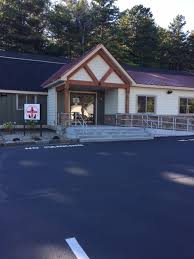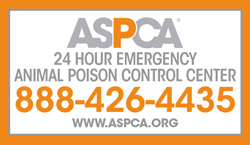Emergency Veterinary Services & First Aid
All after hours emergencies (including holidays and weekends) are referred to the following:
 35 Fawn Road
Gansevoort, NY 12831
518-761-2602
www.northwayanimalemergency.com
35 Fawn Road
Gansevoort, NY 12831
518-761-2602
www.northwayanimalemergency.com
 As a pet owner, you need to make sure to have basic first aid supplies for your pets in your household. Have this kit in the house and fully stocked with supplies at all times, next to the first aid kit for your family. Many of the items in a family first aid kit can be used for pets, too.
As a pet owner, you need to make sure to have basic first aid supplies for your pets in your household. Have this kit in the house and fully stocked with supplies at all times, next to the first aid kit for your family. Many of the items in a family first aid kit can be used for pets, too.
The Northway Animal Emergency Clinic
 35 Fawn Road
Gansevoort, NY 12831
518-761-2602
www.northwayanimalemergency.com
35 Fawn Road
Gansevoort, NY 12831
518-761-2602
www.northwayanimalemergency.com
Wild Life Animals
If you have found a wild animal in need of medical assistance, do not try to help the animal yourself. Please contact North Country Wild Care at 518-964-6740.First Aid for your Pet
 As a pet owner, you need to make sure to have basic first aid supplies for your pets in your household. Have this kit in the house and fully stocked with supplies at all times, next to the first aid kit for your family. Many of the items in a family first aid kit can be used for pets, too.
As a pet owner, you need to make sure to have basic first aid supplies for your pets in your household. Have this kit in the house and fully stocked with supplies at all times, next to the first aid kit for your family. Many of the items in a family first aid kit can be used for pets, too.
- Gauze For wrapping wounds or muzzling the injured animal
- Nonstick bandages, towels, or strips of clean cloth To control bleeding or protect wounds
- Adhesive tape for bandages *Do NOT use human adhesive bandages (eg, Band-Aids®) on pets For securing the gauze wrap or bandage
- Milk of magnesia Activated charcoal To absorb poison Always contact your veterinarian or local poison control center before inducing vomiting or treating an animal for poison
- Hydrogen peroxide (3%) to induce vomiting Always contact your veterinarian or local poison control center before inducing vomiting or treating an animal for poison
- Digital Thermometer You will need a “fever” thermometer because the temperature scale of regular thermometers doesn’t go high enough for pets To check your pet’s temperature. Do not insert a thermometer in your pet’s mouth – the temperature must be taken rectally.
- Eye dropper (or large syringe without needle) To give oral treatments or flush wounds
- Muzzle (in an emergency a rope, necktie, soft cloth, nylon stocking, small towel may be used) To cover your pet’s head. If your pet is vomiting, do not muzzle it!
- Leash To transport your pet (if your pet is capable of walking without further injury)
- Stretcher (in an emergency a door, board, blanket or floor mat may be used) To stabilize the injured animal and prevent further injury during transport
